A Definitive Ranking of Every Can Album
- Oops!Something went wrong.Please try again later.
- Oops!Something went wrong.Please try again later.
- Oops!Something went wrong.Please try again later.
- Oops!Something went wrong.Please try again later.
The post A Definitive Ranking of Every Can Album appeared first on Consequence.
Consequence’s Dissected takes a holistic look at an artist or band’s discography, a director’s catalog, or some other critical pop-culture collection. It’s exact science by way of a few beers. This time, we’re revisiting krautrock trailblazers Can in all of their avant glory.
From a certain vantage point, Can’s genius almost seems accidental. The krautrock band formed with no real direction in mind, stumbled upon their most revered vocalist by chance as he was busking on the streets of Munich, and recorded some of their most legendary work as a last-minute Hail Mary after spending too much time prior to their deadline playing chess. And yet, that vocalist, the one-of-a-kind Damo Suzuki; that record, Ege Bamyasi; and the rest of their impressive catalog would all ultimately contribute to Can becoming one of the most essential rock bands to come out of the ’70s.
Of course, Can’s brilliance was not an accident at all. Before the founding members ever conceived of forming a rock group, they were already well-trained and well-accomplished. Keyboardist Irmin Schmidt and bassist/multi-instrumentalist Holger Czukay both had extensive classical training, including stints studying under the experimental composer Karlheinz Stockhausen. In most other universes, they probably had long careers in the world of contemporary classical music, but a 1965 trip to New York City taken by Schmidt forked their future. It was then that the artist discovered the avant garde outsiders of rock music, acts like the Velvet Underground, Frank Zappa, and Jimi Hendrix. Upon returning, Schmidt and Czukay recruited free-jazz drummer Jaki Liebezeit and guitarist Michael Karoli, ultimately setting out to make something guitar music hadn’t seen before.
Well, the mad lads did it. While there might be a couple of misses in their 11-album discography, Can’s best work isn’t merely high-quality rock music, it’s some of the most boundary-pushing jamming ever put to tape. From the avant-freak-outs of their early material to their iconic three-LP run with the late Suzuki to the genre-hopping of their post-Suzuki era, there are few rock scenes that don’t trace at least some influence back to Can.
The list of artists who have cited them as an inspiration is almost too staggering to compile. Everyone from David Bowie to Radiohead, James Murphy to Mark E. Smith, Talking Heads to Joy Division, and Sonic Youth to Oasis has given the band their flowers. Basically, anyone who’s ever picked up a guitar and thought, “I kind of want to get a little weird with it,” has almost certainly gone through a Can phase.
So, whether you are just starting your Can phase or are already a certified Canner and just want to see how wrong we are, we humbly present the definitive ranking of every Can album. — Jonah Krueger
11. Out of Reach (1978)
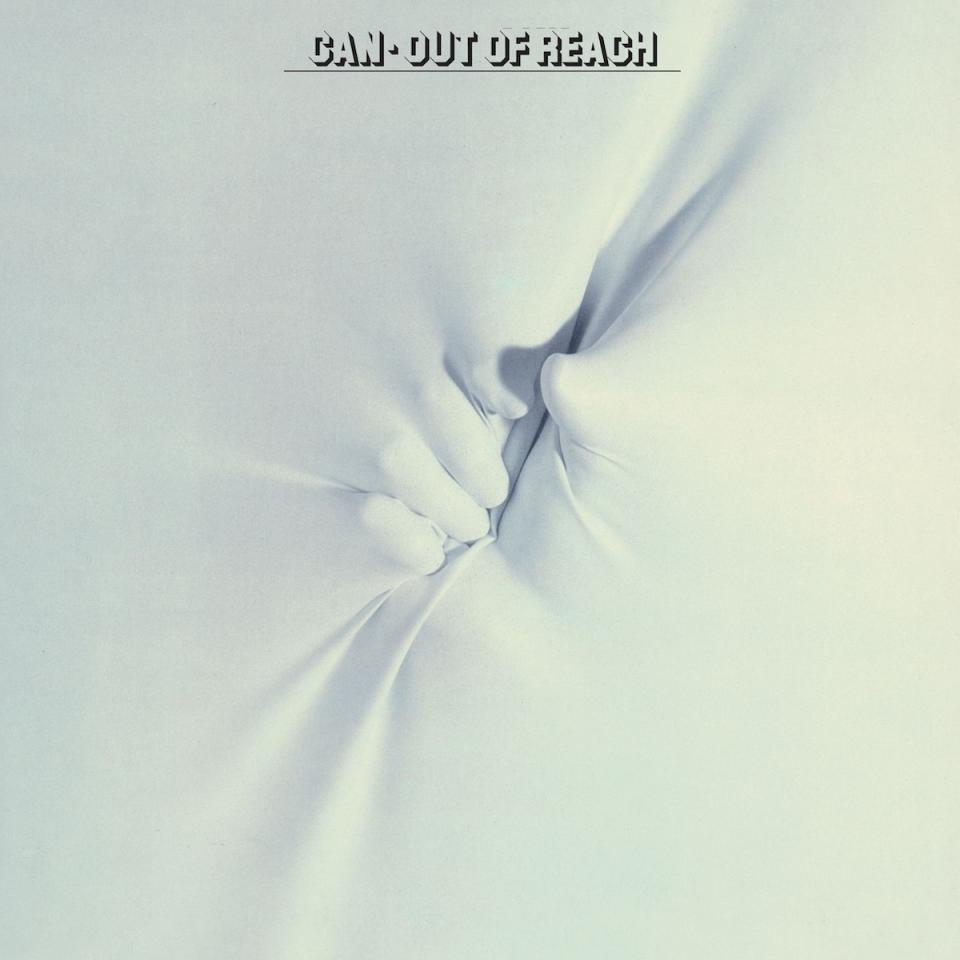
Runtime: 35:19
Personnel: Jaki Liebezeit, Michael Karoli, Irmin Schmidt, Rosko Gee, and Rebop Kwaku Baah
Vitamin C (Essential Cut): “Give Me No ‘Roses'” makes a case for being the least obnoxious. We’ll leave it at that…
Yoo Doo Right (Wildest Extended Jam): Slightly more fulfilling than the other jams on this record, “November” has its moments, however fleeting they may be.
Can It Can? (Verdict/Analysis): On their 1978 effort, Can’s glory days lie far outside of the group’s reach. A collection of overstuffed, directionless compositions, the record attempts to mix various genres into an undiscovered color but instead ends up with a muddy, unappealing brown. The synths are painful, the “jams” are bland, and the vocals often come across as annoying. There’s very little to say about an album like this, as it is ultimately devoid of anything worth discussing other than, “Yeah, maybe skip this one.” — Venus Rittenberg
10. Rite Time (1989)
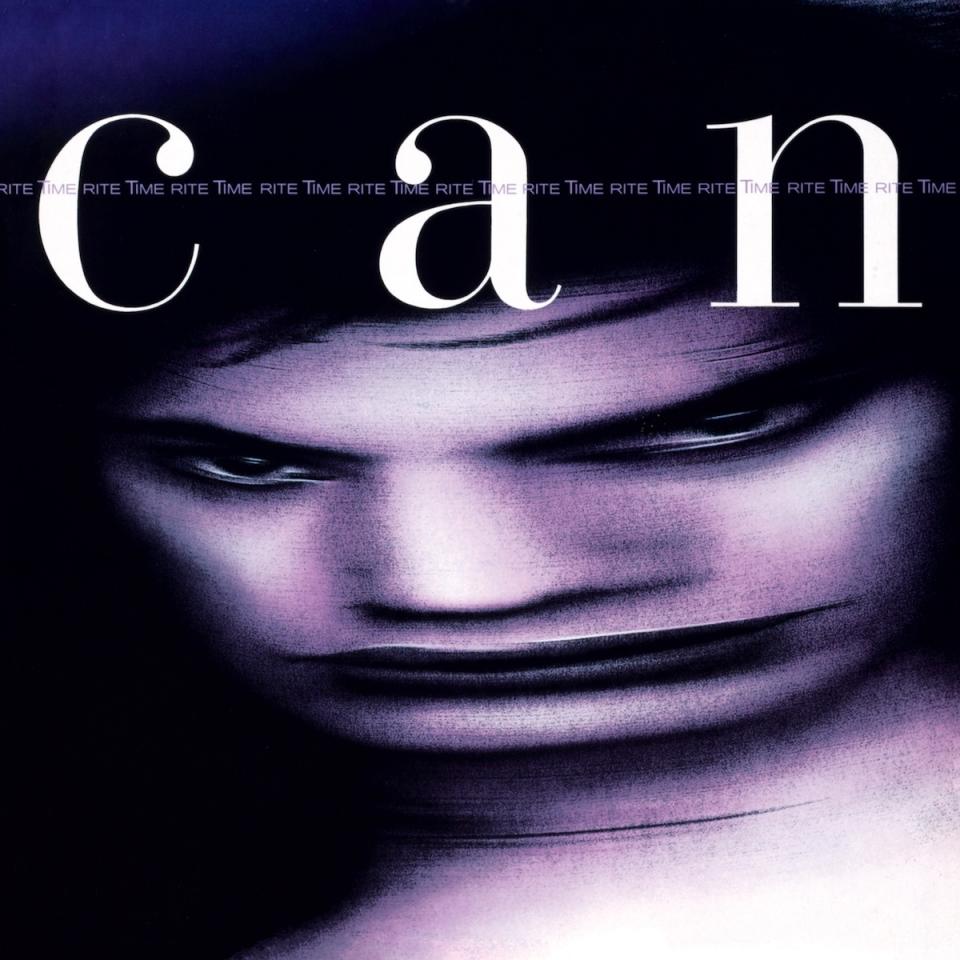
Runtime: 41:52
Personnel: Malcolm Mooney, Michael Karoli, Irmin Schmidt, Holger Czukay, and Jaki Liebezeit
Vitamin C: Most of Rite Time is pretty weird — and not in the way the best Can albums are, mind you, but weird in the sense that it’s genuinely confounding. While it’s just as sonically confused as the rest of the project, “Like a New Child” still stands far and away as the most interesting little experiment, be it for its contemplative tempo or gradual build.
Yoo Doo Right: “Give the Drummer Some” might not be one of the most memorable tracks, nor is it one of their most impressive displays of musicianship, nor is it among their most groundbreaking experiments, nor is it that compelling composition, nor is it… wait, where was I going with this?
Can It Can?: Rite Time stands out as a particularly ugly duckling in Can’s late era. It’s their final studio album and arrived as a pseudo reunion, as it had been 10 years since the band’s previous release. Unfortunately, the time off didn’t result in a particularly good project. In a sense, Rite Time looks to recapture some of the band’s original spirit, with abstract structures and unhinged vocals from none other than Malcolm Mooney, who took the mic on Can’s debut. Far from the pointed, sharp, boundless jams of their late ’60s and early ’70s work, however, Rite Time is an empty can. The vocals are slurred and annoying, the songs contain way too much empty space, and it’s damn near impossible to reconcile that these drum parts come from the same man behind Tago Mago. The ’80s production ain’t doing the gang any favors either. — J. Krueger
09. Can (1979)
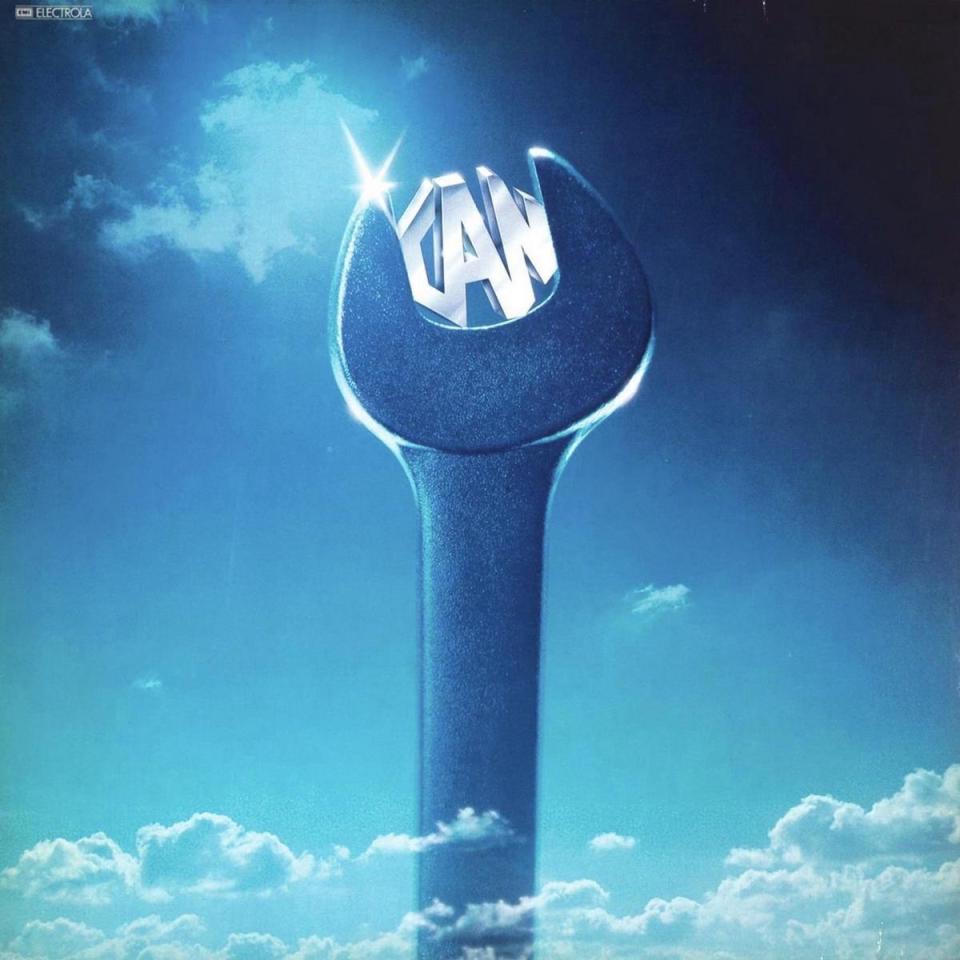
Runtime: 39:41
Personnel: Michael Karoli, Irmin Schmidt, Holger Czukay, Rosko Gee, Jaki Liebezeit, and Rebop Kwaku Baah
Vitamin C: A fairly enjoyable jam, at least by the standards of this album, “Safe” takes the cake thanks to its interesting vocal style and soaring guitars.
Yoo Doo Right: “Sodom” gets a little lost within itself, but that makes it a little exciting! The song lacks direction in a purposeful, experimental way, rather than the more banal manner exhibited by some of the other tracks on the project.
Can It Can?: The cover of “E.F.S. Nr. 99 (Can Can),” from Jacques Offenbach’s opera Orpheus in the Underworld, is perhaps the single worst song in the band’s entire discography. (Editor’s Note: No, we will not acknowledge the pun.) Luckily, the rest of the album fares quite a bit better, even if it’s far from the most engaging music Can ever put to tape. The more rock-centric jams on Can are somewhat of a loose return to form — fitting for a self-titled effort. Can once again sounds focused and cohesive, but the live-wire energy they were able to harness on their best material remains missing. The group might have figured as much themselves, as the record would prove to be Can’s last for over a decade. — V. Rittenberg
08. Saw Delight (1977)
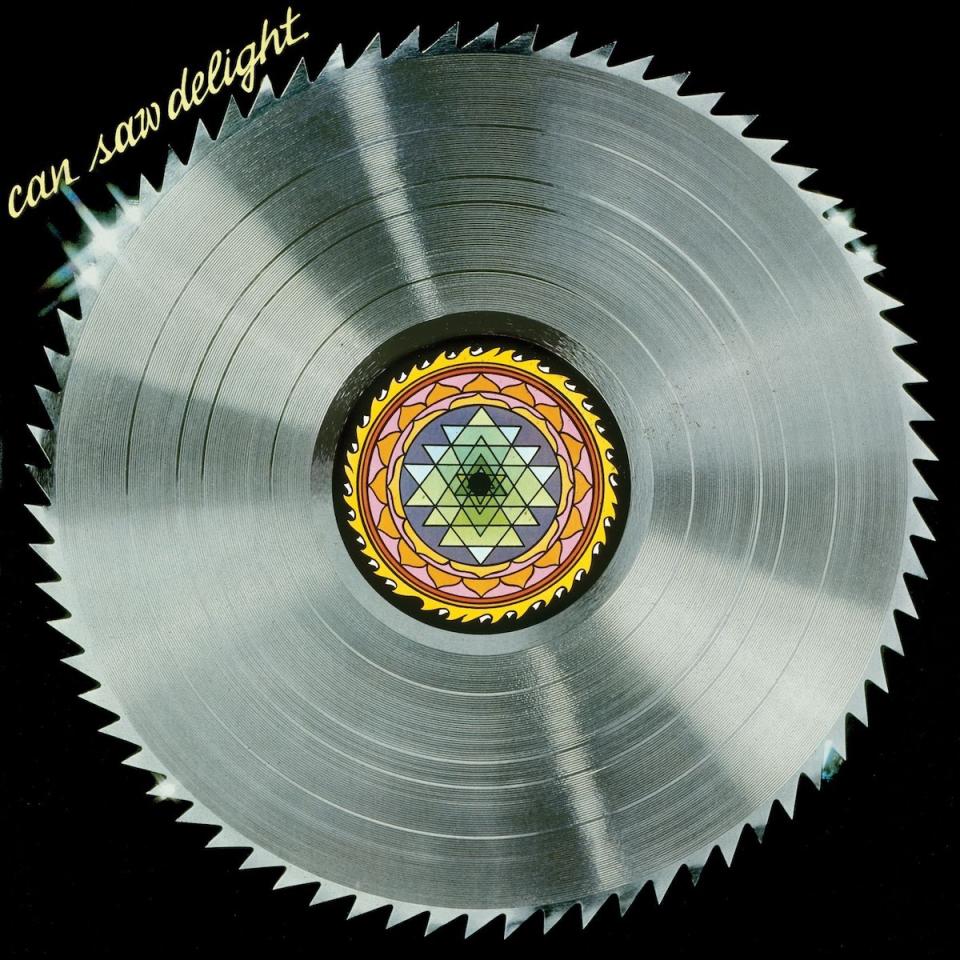
Runtime: 37:29
Personnel: Holger Czukay, Michael Karoli, Jaki Liebezeit, Irmin Schmidt, Rosko Gee, and Rebop Kwaku Baah
Vitamin C: “Don’t Say No” manages to be one of the better marriages between Can’s krautrock, disco, and world music influences. With its tight groove and fuzzy guitar, it’s not a bad choice if you’re looking to dance.
Yoo Doo Right: Every Can album has the one jam that extends well over the 10-minute mark, and Saw Delight’s is “Animal Waves.” It sounds a whole lot like the rest of the tunes on the record, but points for tripling the length of the others!
Can It Can?: By 1977, Can had largely turned in their avant garde badges and embraced their jammiest tendencies, folding in reggae and world music influences for good measure, and with the addition of ex-Traffic members Rosko Gee and Rebop Kwaku Baah to the band’s roster, Saw Delight positions Can as a reformed jam band. The album’s five songs are far from atrocious, with some like “Don’t Say No” or “Animal Waves” even boasting some decently impressive percussion grooves, but they noticeably lack both the pointed urgency of records like Tago Mago and the reserved dynamics of records like Future Days or Soon Over Babaluma. It’s a pleasant enough listening experience, but it’s also about as close as the legendary band has ever gotten to background music. — J. Krueger
07. Flow Motion (1976)
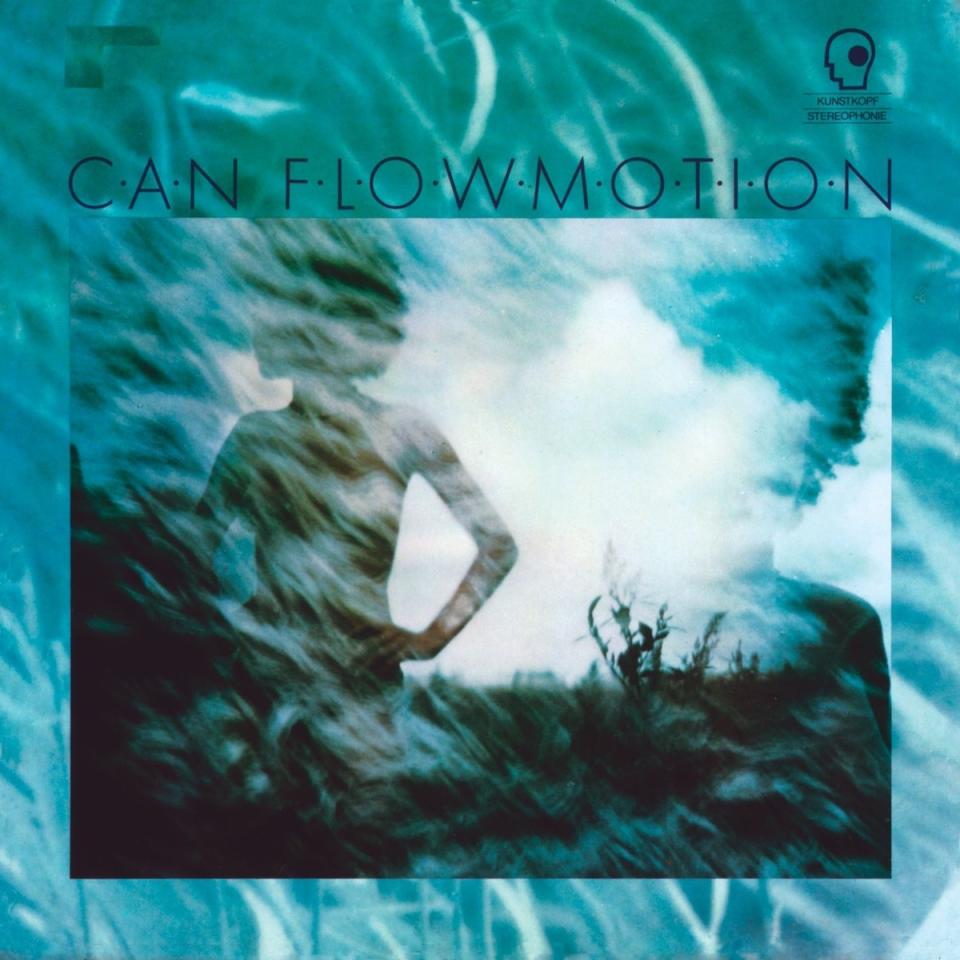
Runtime: 37:37
Personnel: Holger Czukay, Michael Karoli, Jaki Liebezeit, and Irmin Schmidt
Vitamin C: “I Want More” is a fun, groovy little song and an easy Flow Motion highlight.
Yoo Doo Right: “Flow Motion” is perhaps the song on Flow Motion where the reggae components of the record sound most at home. It flows (ha!) into the tune’s jammy style quite well.
Can It Can?: The first Can album that wasn’t recorded live, Flow Motion serves as a turning point in the band’s artistic journey. Gone are the angular arrangements, the spastic performances, and the stench of krautrock. Instead, Can embrace reggae stylings, disco trends, and generally chilled-out vibes. Such a shift, in theory, isn’t necessarily misguided. At the very least, Flow Motion is a more lighthearted listen than most of the German act’s other efforts, and the performances sounds sufficiently invigorated. But while there are certainly good ideas housed within the record’s brief 37 minutes, the execution leaves one asking if Can was really the best band to realize them. — V. Rittenberg
06. Landed (1975)
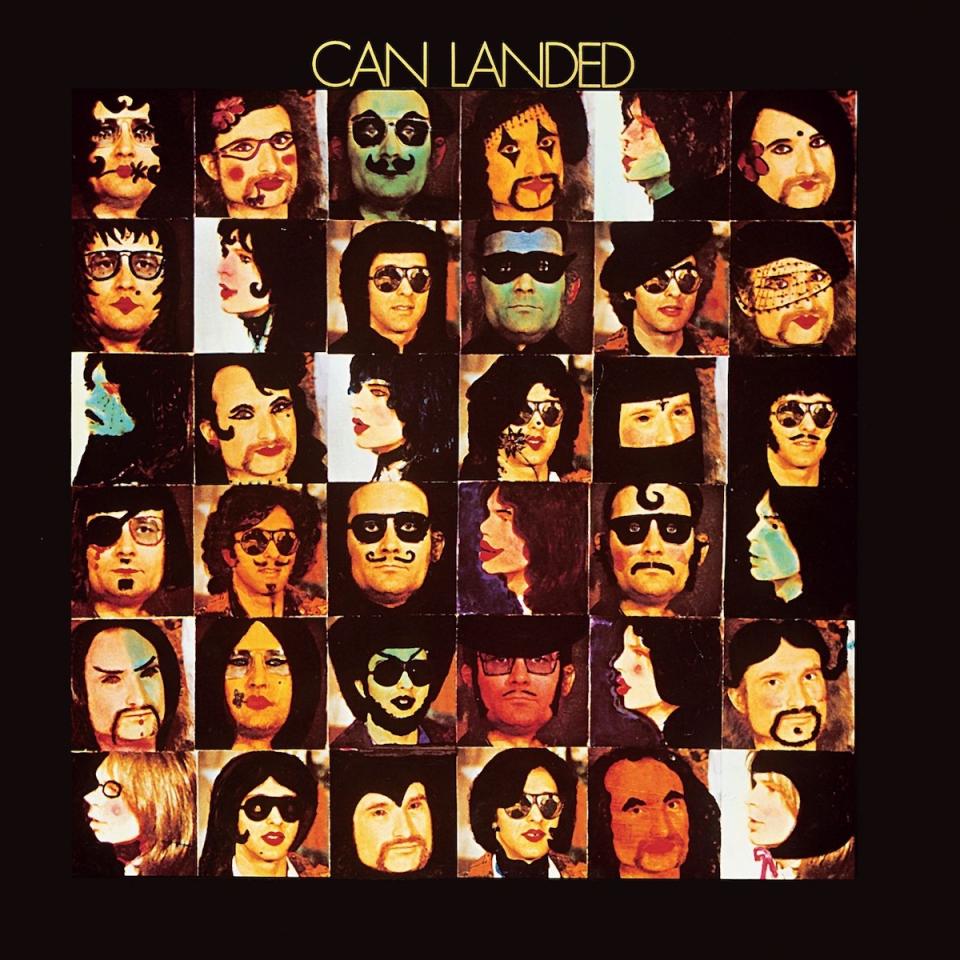
Runtime: 40:18
Personnel: Holger Czukay, Michael Karoli, Jaki Liebezeit, and Irmin Schmidt
Vitamin C: “Vernal Equinox” sees the band at the height of their experimentation on this record, resulting in a grand and satisfying tune.
Yoo Doo Right: “Unfinished” is Landed at its most sprawling and unreserved. As the band would soon go on to pivot styles with subsequent releases, the track is also perhaps the last beacon of Can’s avant garde roots.
Can It Can?: Landed sees Can dialing into the sounds that inspired their formation, harkening back to acts like the Velvet Underground. The songs are artsy, stilted, and, every now and then, break into surprisingly pop-friendly melodies (like the harmony-backed chorus of “Hunters and Collectors”). With the band’s dancier, reggae-inspired era arriving just one album later, Landed serves as Can’s last effort as krautrock’s poster child. “Vernal Equinox,” for example, is an epic, sprawling art-rock banger, and the final track, an instrumental jam titled “Unfinished,” brings to mind the second LP of Tago Mago with its relative formlessness and unique sonic palette. Such tracks feel like the good ol’ stuff, albeit with a tad less impact — a sentiment that describes the entirety of Landed pretty well. — V. Rittenberg
05. Monster Movie (1969)
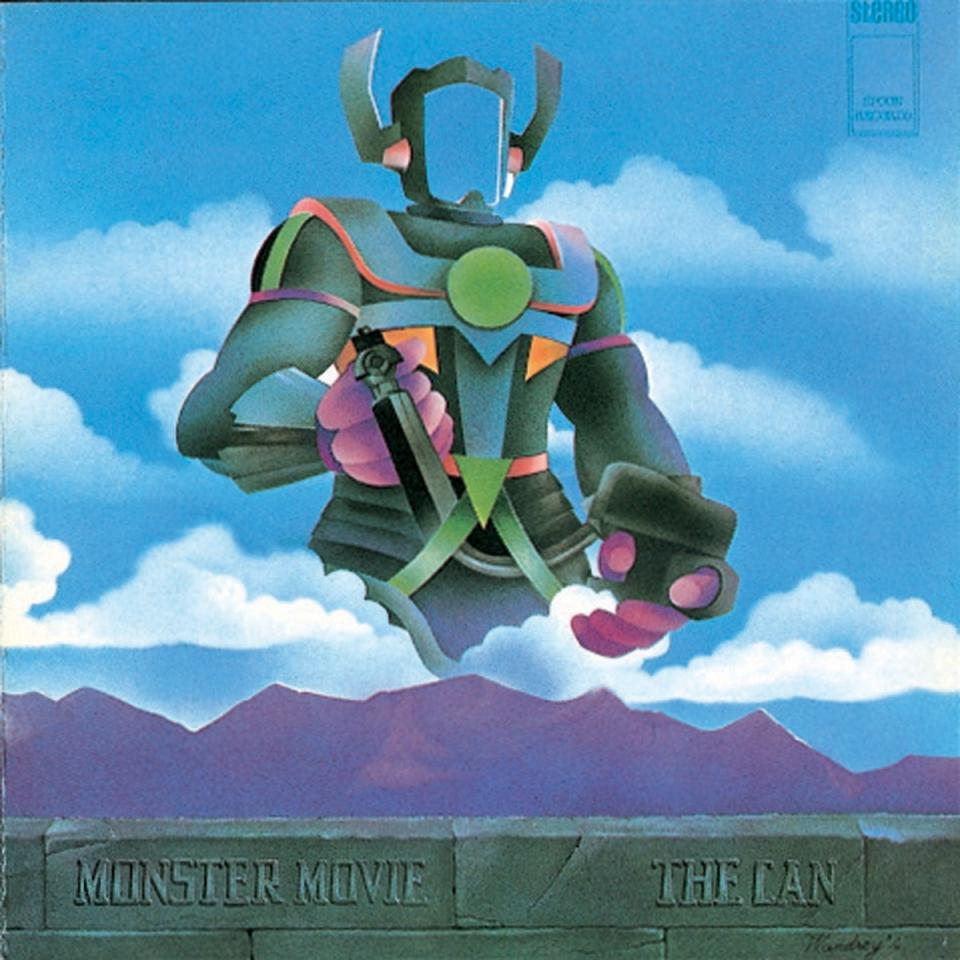
Runtime: 38:05
Personnel: Irmin Schmidt, Jaki Liebezeit, Holger Czukay, Michael Karoli, and Malcolm Mooney
Vitamin C: Without exaggeration, “Yoo Doo Right” is one of the wildest, most exciting closers in rock history.
Yoo Doo Right: Do we even need to say it?
Can It Can?: For a band that was, as Irmin Schmidt put it, formed with only a vague notion of creating “new music,” Can burst out of the gate remarkably well-formed on Monster Movie. Opener “Father Cannot Yell” introduces the jittery, off-kilter, noise-prone take on rock music that would go on to define Can’s first era, and “Outside My Door” is a proto-punk barn-burner that, frankly, should have been an underground hit. Then, of course, there is the group’s first masterpiece: “Yoo Doo Right,” a twenty-minute jam that makes up all of the album’s second side. The track brims with boundless creativity and would ultimately serve as the band’s North Star for their next batch of releases. — V. Rittenberg
04. Soon over Babaluma (1974)
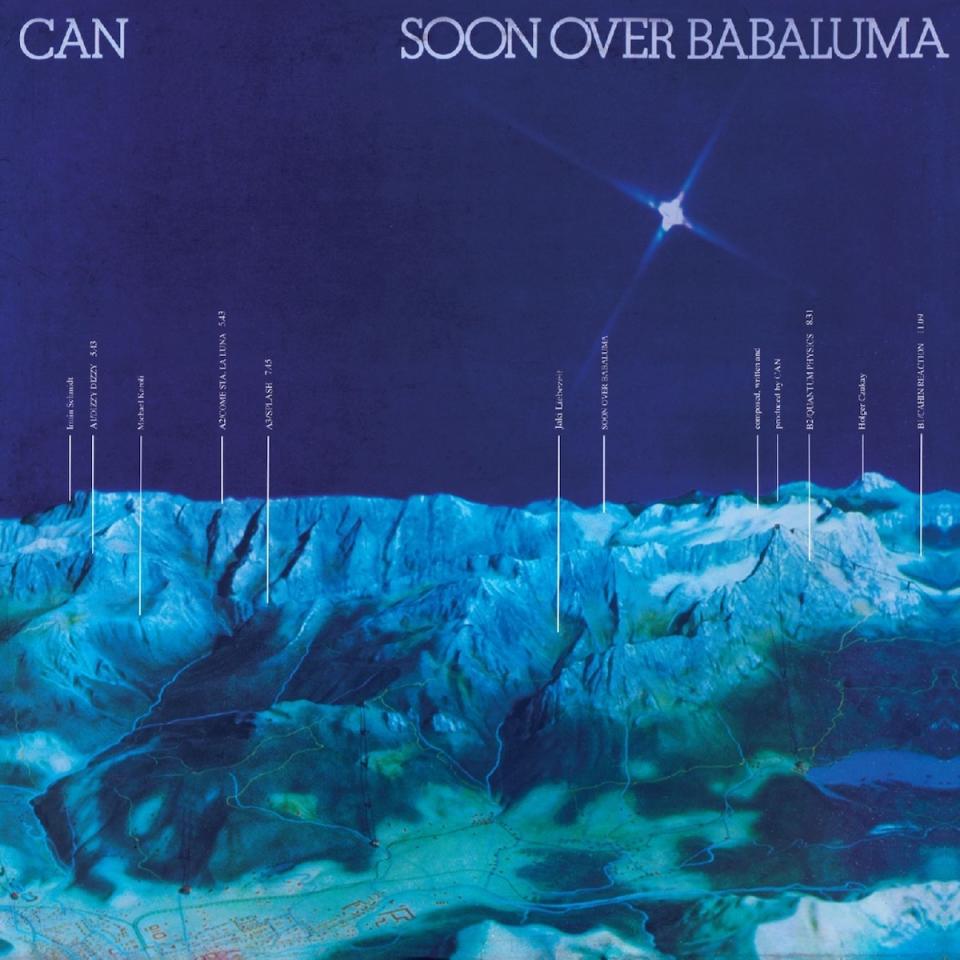
Runtime: 38:56
Personnel: Michael Karoli, Irmin Schmidt, Jaki Liebezeit, and Holger Czukay
Vitamin C: “Come sta, la luna” retains the dramatic, otherworldly tone that ran throughout the Suzuki trilogy, and yet, sounds markedly different with its unusually prominent piano, filtered vocals, and spacey production.
Yoo Doo Right: “Chain Reaction” might have the length, but when it comes to the defining jam of Soon over Babaluma, it’s hard not to turn towards the frantic, wordless “Splash.”
Can It Can?: Can managed the departure of Suzuki shockingly well. Once the one-of-a-kind frontman left for marriage and the teachings of Jehovah’s Witness, the remaining members continued down the path Future Days had set them on, further exploring the depths of their wide range of influences. The resulting Soon over Babaluma houses some of Can’s most ambient, out-there, and deeply satisfying moments, from the eerie “Come sta, la luna” to the experimental “Quantum Physics.” Karoli and Schmidt take over vocal duties and come through with performances that perfectly supplement the whacked-out, low-key tone of the album. Understandably, Can’s three powerhouse releases overshadow Soon over Babaluma, but for fans willing to dig just a little deeper into their catalog, the album serves as a hidden, extremely worthwhile gem. — J. Krueger
03. Future Days (1973)
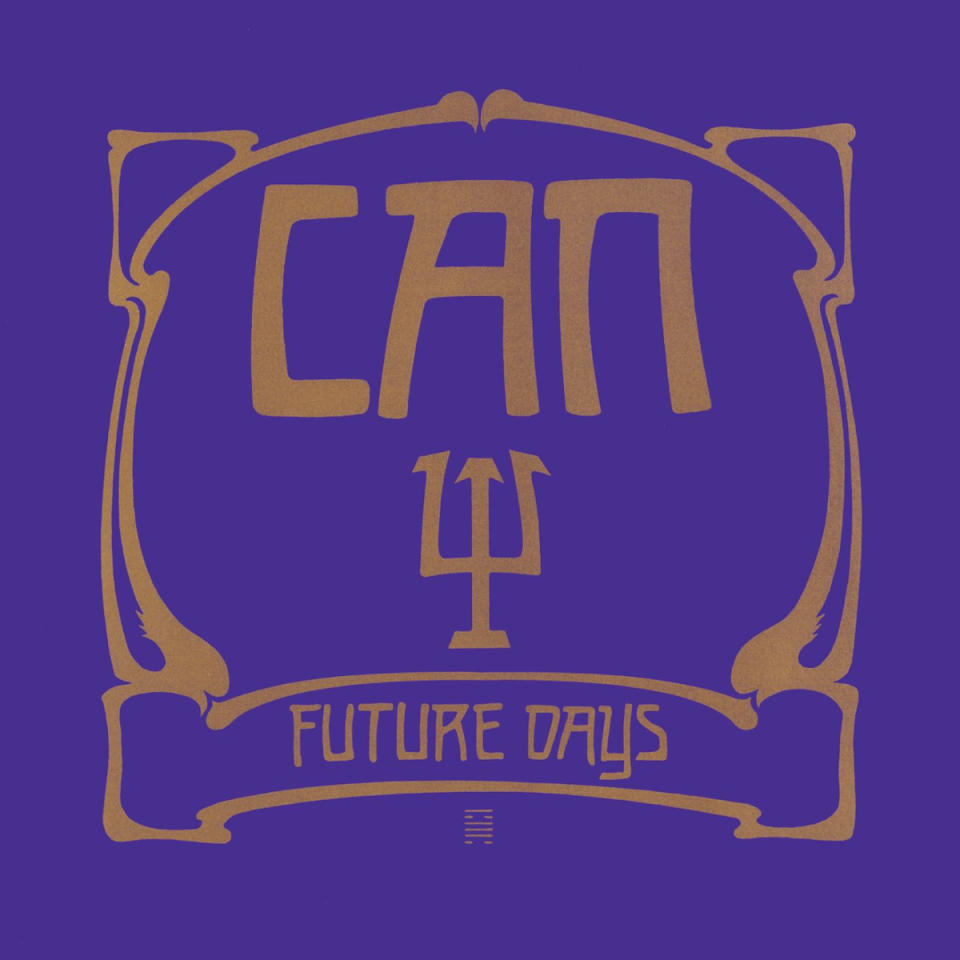
Runtime: 41:04
Personnel: Damo Suzuki, Holger Czukay, Michael Karoli, Jaki Liebezeit, and Irmin Schmidt
Vitamin C: “Future Days,” somehow, showcased a new side of Can, one that was softer and stable — and it still fucking rocks.
Yoo Doo Right: “Bel Air” is the “Yoo Doo Right” of the Suzuki trilogy, and it’s every bit as grand, forward-thinking, and expertly crafted as the Monster Movie cut.
Can It Can?: By the release of Future Days, Can had fully grown into themselves. They had kept a consistent lineup for the longest period yet in the band’s existence, perfected playing off of each other during extended jam sessions, and had come to a pretty clear understanding of what they wanted to accomplish. As such, Future Days is perhaps the most realized, cohesive, singular vision of Can’s most legendary lineup (Suzuki, Czukay, Karoli, Liebezeit, and Schmidt).
Leaning into Can’s ambient and atmospheric tendencies, each of the album’s four songs feels effortless in their execution. “Future Days” simmers along as Suzuki’s compressed vocals melodically offer guidance, “Spray” introduces the record’s first notion of dissonance and urgency, and the groovy “Moonshake” serves as the closest thing Future Days has to a single. Then comes “Bel Air,” the gorgeous closer that, in a way, harkens back to “Yoo Doo Right.” The track takes up all of Side B, and its multi-phased structure builds to a surprisingly comforting, deeply satisfying conclusion. Like Babe Ruth, Can called their shot with Future Days and subsequently knocked it out of the park — which, paradoxically, is also what holds it back from the top spot. As immaculate as the project is, the one thing it lacks is the manic, anything-goes anti-logic of records like Ege Bamyasi and Tago Mago. Speaking of… — J. Krueger
02. Tago Mago (1971)
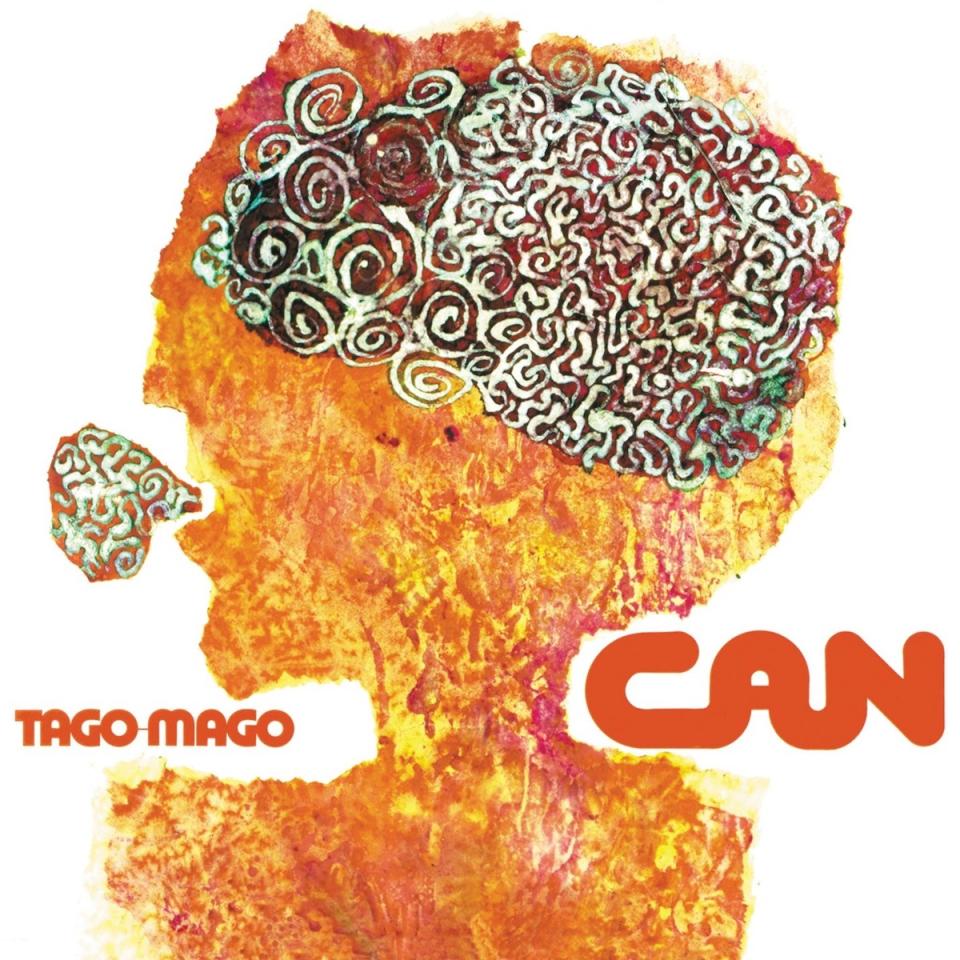
Runtime: 73:27
Personnel: Damo Suzuki, Holger Czukay, Michael Karoli, Jaki Liebezeit, and Irmin Schmidt
Vitamin C: If we were rule breakers, we’d tag the entire first disc of this double LP as the “essential cut.” But, alas, we’re squares, and so the comparatively accessible “Mushroom” takes home the title.
Yoo Doo Right: On “Halleluhwah,” Can quickly establishes a bustling groove and then spends about 18 minutes seeing what kinda crazy shit they can throw on top of it without losing the beat. As it turns out, they can throw on quite a lot.
Can It Can?: There’s a lot of accolades you could throw Tago Mago’s way — Can’s first full-length opus; a defining document of krautrock; one of the most boundary-pushing guitar records of the 1970s; a fucking ripper — none of which would be hyperbole. Harnessing the creative energy of songs like “Yoo Doo Right,” the record’s dialed-in performances, dizzying structures, and massive scope results in a listening experience that turns one’s brain into the swirling mess of colors not unlike those featured on the record’s sleeve.
The first disc contains some of the sharpest, most exhilarating songs of Can’s discography, complete with blistering guitar work and hypnotic, blood-pumping drumming. Then, as “Halleluhwah” turns into “Aumgn” and the second disc begins, the band switches gears and offers arguably their most challenging, formless material. And then, of course, there’s Damo Suzuki, who makes his Can debut with Tago Mago and elevates what could merely have been a masterpiece to a truly timeless effort. — J. Krueger
01. Ege Bamyasi (1972)
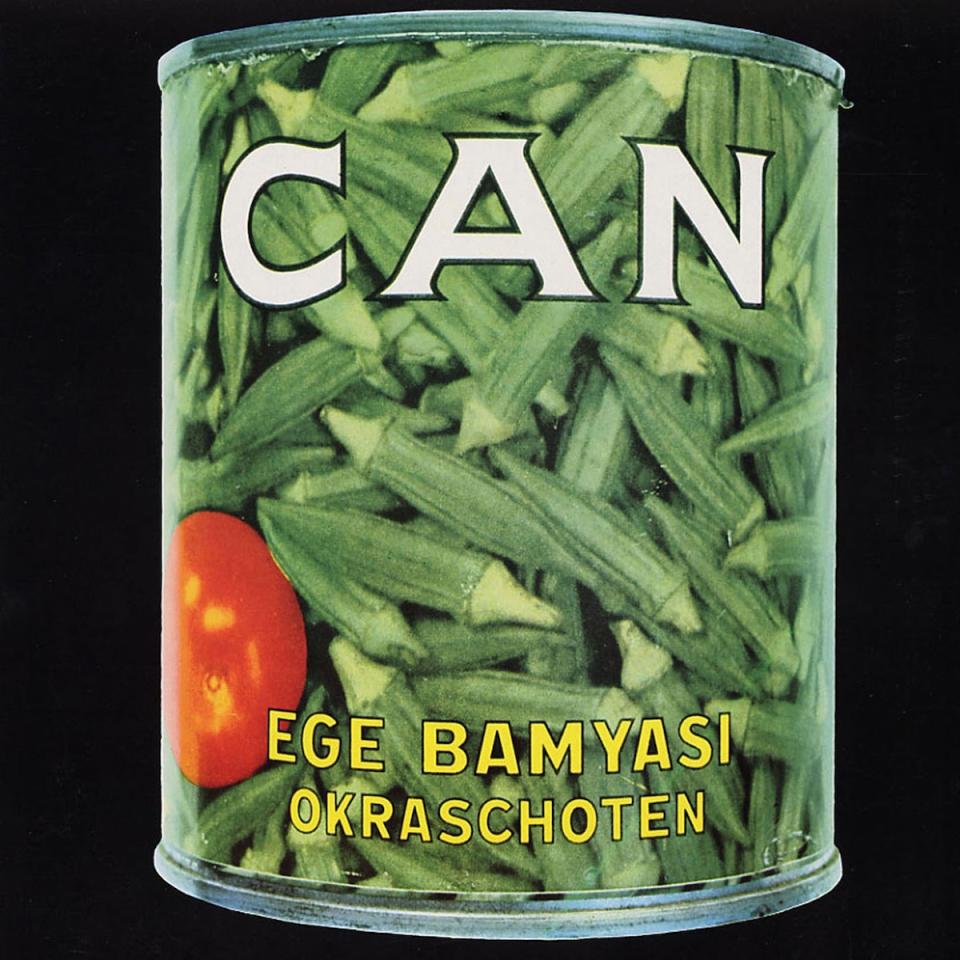
Runtime: 40:06
Personnel: Damo Suzuki, Holger Czukay, Michael Karoli, Jaki Liebezeit, and Irmin Schmidt
Vitamin C: Despite “Spoon” being the successful single at the time, “Vitamin C” has since grown to be Can’s most recognizable song — and for good reason. The snare-heavy groove, muted bass, and eccentric guitars foster a distinctly Can-y tone. Add in Suzuki’s visceral, compelling performance, and you’ve got yourself an all-timer.
Yoo Doo Right: Out of their first four releases, Ege Bamyasi finds Can engaging in relative brevity. Still, they couldn’t hold back an extended jam or two, and the wildly dynamic, near-manic “Soup” is of the most bizarre yet rewarding compositions Can ever strung together.
Can It Can?: Tago Mago has rawness and scope, Future Days is refined and restrained, and each has deservedly etched themselves into the art-rock canon. Ege Bamyasi, though, is the perfect middle ground, marrying the band’s free-form fieriness and newly-forming interest in softer, ambient sonic landscapes to achieve the most Can-ish album of them all. Take the first side, where the gnarly, mutating “Pinch” leads into the understated, weirdo beauty of “Sing Swan Song,” which, in turn, transitions into to the deceptively bright “One More Night” and the eerie, ever-iconic “Vitamin C.” It’s an eclectic, almost confounding four-song run that shouldn’t work nearly as well as it does. And yet, with Suzuki’s unmatched presence and the band seemingly unable to come up with a bad idea, it’s a damn near flawless first half on a damn near flawless album.
Reportedly, Ege Bamyasi had a somewhat disastrous recording process, with the members feeling a lack of focus and Suzuki and Schmidt being unable to take their attention away from their ongoing chess battles. And yet, the songs of Ege Bamyasi aren’t great despite of this disorder, they’re the glorious product of it. The best of Can didn’t come from careful planning and surgical execution, it came from sheer inspiration, raw fearlessness, and harnessed chaos (pivoting from classical to rock, ripping Suzuki off the street, being more consumed with trapping your bandmate’s king than fulfilling your contractual obligations). More than any other Can release, Ege Bamyasi captured that uncontainable, unsustainable energy. — J. Krueger
A Definitive Ranking of Every Can Album
Jonah Krueger and Venus Rittenberg
Popular Posts
Cher on Dating Younger Men: "Men My Age or Older... They're All Dead"
Jon Stewart Mocks “Anti-Woke” Comedians: "Are You That F*cking Unimaginative?"
An Exhausted Parent Ranks All 154 Bluey Episodes from Worst to Best
Paramedics Respond to Britney Spears' Hotel Following Alleged Altercation with Boyfriend: Report

